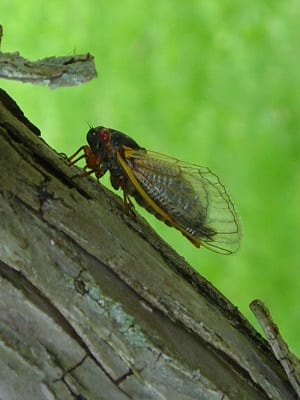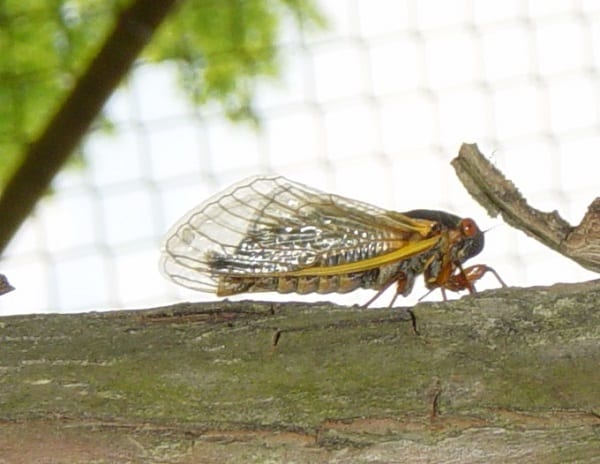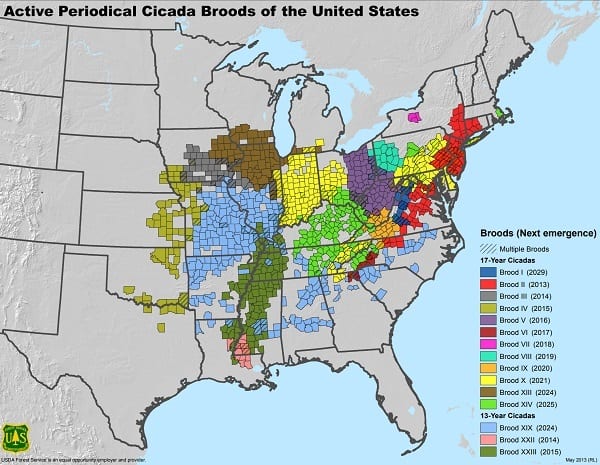NOTTINGHAM, MD—Brood X is coming. For the first time in nearly two decades, the 17-year locusts (actually, cicadas) are set to return to Maryland this spring.
Trillions of the noisy creatures will begin to emerge from the ground in mid-May and stick around through late June. They typically begin to make their way upward once the soil temperature reaches 64 degrees Fahrenheit.
 Back in 2004, the last time Brood X made an appearance in the Baltimore area, people began reporting emergences around May 13th, according to CicadaMania.com.
Back in 2004, the last time Brood X made an appearance in the Baltimore area, people began reporting emergences around May 13th, according to CicadaMania.com.
Periodical cicada Brood X (10) will emerge in the spring of 2021 in Delaware, Georgia, Illinois, Indiana, Kentucky, Maryland, Michigan, North Carolina, New Jersey, New York (somewhat), Ohio, Pennsylvania, Tennessee, Virginia, West Virginia, and Washington D.C.
So, why do these cicadas stay underground for 17-years? The prevailing research suggests that they’ve developed a long, 17-year lifecycle to avoid predators that can sync up with their lifecycle & emergence. Why are there so many? Research suggests that their huge numbers allow them to overwhelm predators, so enough of them will live on to breed and perpetuate the brood.
This species is different from the typical cicadas that emerge annually, which are green and do not come in the mass quantities of Brood X. The 17-year cycle of cicadas (Genus: Magicicada) are usually black and orange with red eyes.
Once they emerge, the adults will lay their eggs in trees which will hatch 4 to 6 weeks later in more than a dozen states, according to USA Today.
The Brood X cicadas will also be very loud, emitting sounds between 80 and 100 decibels – equivalent to a low-flying airplane or a lawn mower. Give a listen below…
Singing Magicicada septendecim from Cicada Mania on Vimeo.
When all is said and done, their offspring will head back underground until 2038.
The full periodical cicada brood map from the U.S. Forest Service can be viewed below below.
[Images via Chris Montcalmo Photography]



